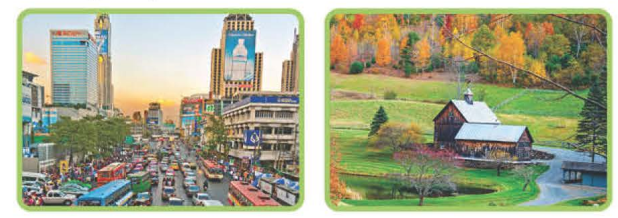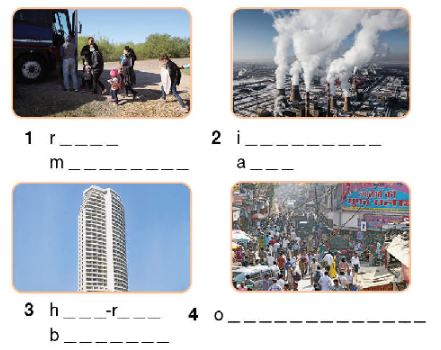Giải SGK, SBT Unit 5. Urbanisation Bright
Giải SGK, SBT Unit 5 Bright
3. Replace the phrases in bold Emily used in her essay with those from the Useful Language box.
(Thay thế các từ in đậm mà Emily dùng trong bài luận của cô ấy với những cụm trong hộp Ngôn ngữ Thông dụng.)
|
Useful Language (Ngôn ngữ thông dụng) |
|
Introducing advantages/disadvantage (Giới thiệu lợi ích/ mặt hạn chế) |
|
• One of the benefits is ... (Một trong những lợi ích là …) • An additional advantage is ... (Một lợi ích khác nữa là …) • The main disadvantage is ... (Mặt hạn chế chính là …) • Another/a further drawback/negative aspect is … (Một hạn chế/khía cạnh tiêu cực khác/xa hơn là …) |
1. Listen to a member of the city council talking about a new urban development plan and fill in the gaps (1-5). Write NO MORE THAN TWO WORDS AND/OR A NUMBER for each answer.
(Lắng nghe thành viên của hội đồng thành phố nói về một kế hoạch phát triển đô thị mới và điều vào các chỗ trống (1-5). Viết KHÔNG QUÁ HAI TỪ VÀ/HOẶC MỘT CON SỐ cho mỗi câu trả lời.)
Thornton City Urban Development Plan
|
Start date: |
1) _______________ |
|
Public service improvements: |
A new sports centre and 2) _______________; new parks; improvements to the 3) _______________ and two new clinics |
|
Infrastructure improvements: |
500 affordable houses, a new retirement home, upgrades to 4) _______________ including a new tram service and four new bus routes, pedestrian areas to reduce 5) _______________ in the city centre |
Vocabulary (Từ vựng)
Urbanisation: pros and cons (Đô thị hóa: Ưu và nhược điểm)
1. a) Match the words in the two columns.
(Nối các từ trong hai cột.)
|
1. ___ smog 2. ___ trade 3. ___ waste 4. ___ transit 5. ___ soaring 6. ___ medical |
a. and commerce b. facilities c. systems d. prices e. management f. and poor air quality |


 Use the adjectives in Exercise 7 to describe the places in the two photos. Tell your partner.
Use the adjectives in Exercise 7 to describe the places in the two photos. Tell your partner.




